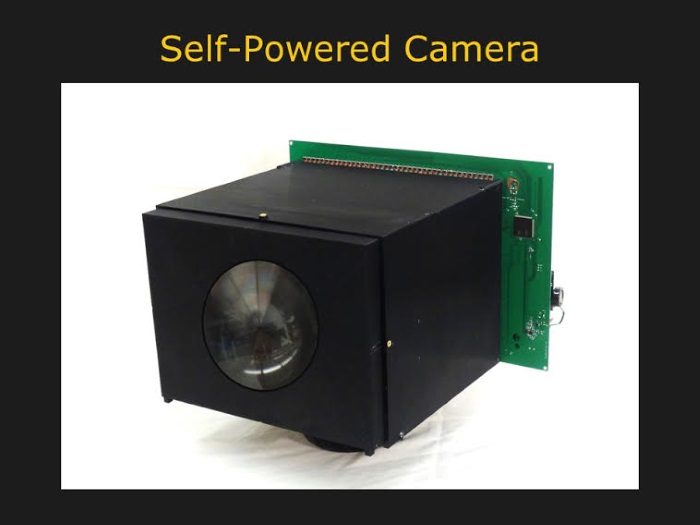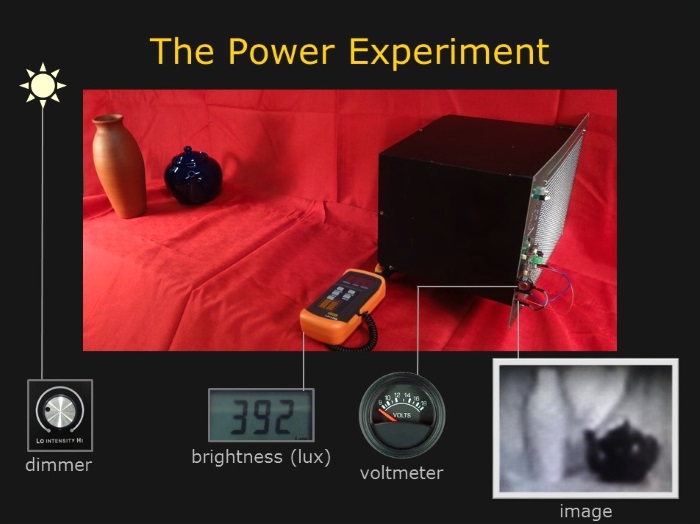A team from Columbia University has figured out how to expound upon the photodiode’s role in a camera’s pixels to give the device not only the ability to capture images, but also generate power by converting light to electricity.

The research team, led by Shree K. Nayar, T.C. Chang Professor of Computer Science at Columbia Engineering, report a prototype, self-powering video camera capable of producing an image each second, indefinitely, of a well-lit indoor scene.
“We are in the middle of a digital imaging revolution,” says Nayar, who directs the Computer Vision Laboratory at Columbia Engineering. “I think we have just seen the tip of the iceberg. Digital imaging is expected to enable many emerging fields including wearable devices, sensor networks, smart environments, personalized medicine, and the Internet of Things. A camera that can function as an untethered device forever — without any external power supply — would be incredibly useful.”
Nayar has been involved in computational imaging for some time now. During his years in the field, he’s realized that while digital cameras and solar panels have different purposes, with one measuring light while another converts light to power, they both essentially use the same components.
Specifically, Nayar honed in on the photodiode. This device can be found in any one of the millions of pixels that make up a digital camera’s image sensor — its role is to produce an electric current when exposed to light, thereby allowing each pixel to measure the intensity of the light falling on it. The photodiode is also used in solar panels to convert incident light into electric power.
If we want to use technical jargon, the photodiode in a camera is used in the photoconductive mode, while in a solar cell it’s used in the photovoltaic mode.
Using off-the-shelf components, Nayar, along with research engineer Daniel Sims and consultant Mikhail Fridberg, built an image sensor with 30×40 pixels. And within a prototype camera, housed using a 3D printed body, each pixel’s photodiode is set to always operate in the photovoltaic mode.

Using just two transistors, Nayar and his team demonstrated that during each image capture cycle, the pixels can be used to first record and read out the image, and then to harvest energy and charge the sensor’s power supply; that is, the image sensor toggles between image capture and power harvesting modes.
While the quality is lacking, the potential is certainly there, as evidenced via the video demonstration below:
What’s more, when the camera’s not being used, it can be used to generate power for other devices like a phone or watch.

Nayar notes in his team’s report that the image sensor could use a rechargeable battery and charge it by way of the device’s harvesting capability: “But we took an extreme approach to demonstrate that the sensor is indeed truly self-powered and used just a capacitor to store the harvested energy.”
“A few different designs for image sensors that can harvest energy have been proposed in the past. However, our prototype is the first demonstration of a fully self-powered video camera,” he continues.
“And, even though we've used off-the-shelf components to demonstrate our design, our sensor architecture easily lends itself to a compact solid-state imaging chip. We believe our results are a significant step forward in developing an entirely new generation of cameras that can function for a very long duration — ideally, forever — without being externally powered.”
Nayar and his team will formally present their work at the International Conference on Computational Photography at Rice University in Houston, April 24 to 26.
Advertisement
Learn more about Electronic Products Magazine





